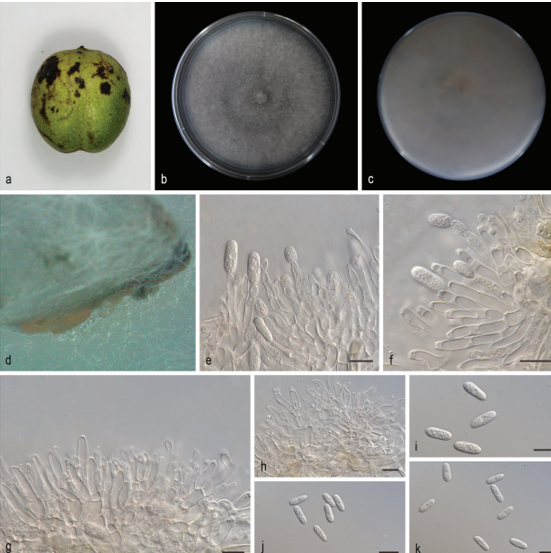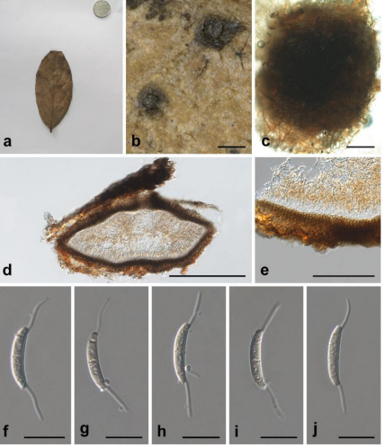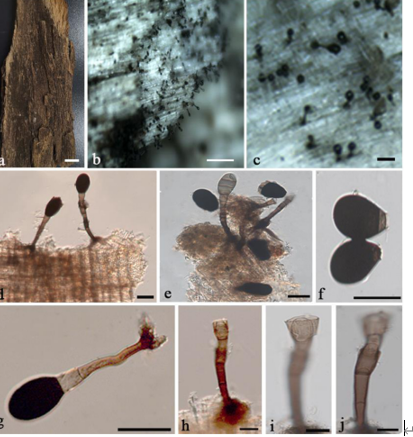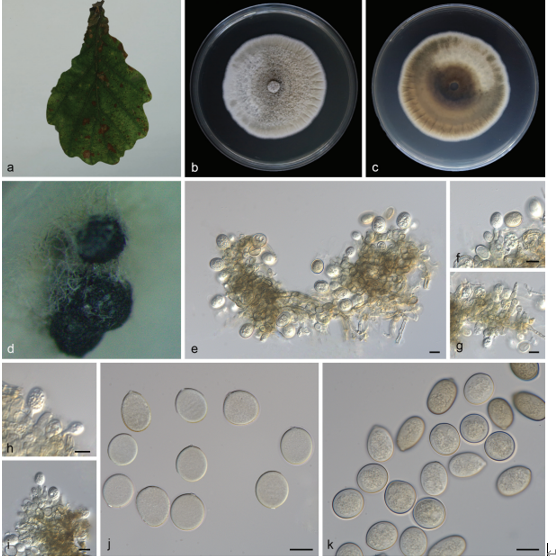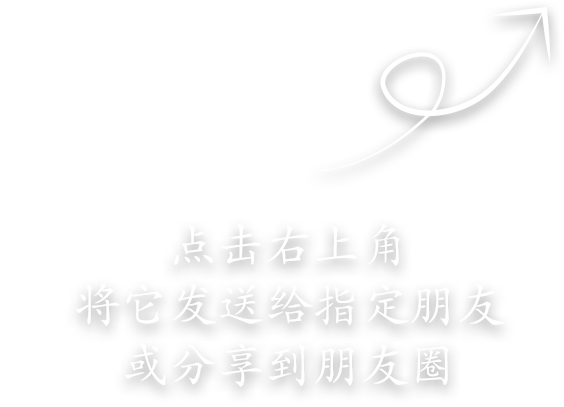Agaricus pyricystis R.L. Zhao & B. Cao, sp. nov. 2020
Fungal Names: FN 570672
Holotype: CHINA. JILIN: Changchun, Jingyue, solitary on ground in mixed forest, 30 Jul 2016, Guojie Li ZRL20161191 (holotype HMAS 278345).
Morphological description
Pileus 100–120 mm wide, at first broadly parabolic, then convex with slightly umbonate, finally applanate with uplifted margin and umbonate center; surface dry, white throughout, sometimes becoming light yellowish brown in age; edge slightly exceeding. Lamellae free, up to 5–6 mm broad, crowded, with intercalated lamellulae, at first pink or pinkish brown, finally dark brown. Stipe 100–150 × 10–15 mm, cylindrical, clavate, hollow, white, smooth above the annulus, fibrillose squamulose below the annulus, becoming yellowish when bruised. Annulus superior, membranous, fragile, white, smooth on the upper surface, floccose with light brown flakes on the lower surface. Context white. Odor of almond. KOH reaction yellow; Schäffer’s reaction reddish orange on pileus and stipe.
Basidiospores 5.5–6.5(–7) ×4–4.5(–5) μm [x¯= 6.2 × 4.3 μm, Q = (1.3–)1.4–1.5(–1.6), Qm = 1.5, n = 30], ellipsoid or obovoid, smooth, thick-walled, brown. Basidia 18–23 × 7.5–8.5 μm, 4-spored, clavate or slightly truncate at the apex, hyaline, smooth. Cheilocystidia 17–25 × 11–16 μm, hyaline, simple or sometimes catenulate, pyriform or utriform. Pileipellis a cutis of cylindrical hyphae, 4.5–16 μm wide, not or slightly constricted at septa, hyaline.
Habitat: on ground in mixed (Pinus and Quercus) forest.
Distribution: northeast China.
GenBank Accession: ITS MK617907; 28S MK617819; tef1 MK614415
Notes: Agaricus pyricystis is represented by two specimens from Jilin in northeast China in a well-supported clade (93/1.0 BS/PP) (FIG. 1). Agaricus sylvicola is similar to A. pyricystis but lacks the numerous pyriform cheilocystidia that characterize A. pyricystis.
Reference: Bin Cao , Mao-Qiang He , Zhi-Lin Ling et al. (2020): A revision of Agaricus section Arvenses with nine new species from China.
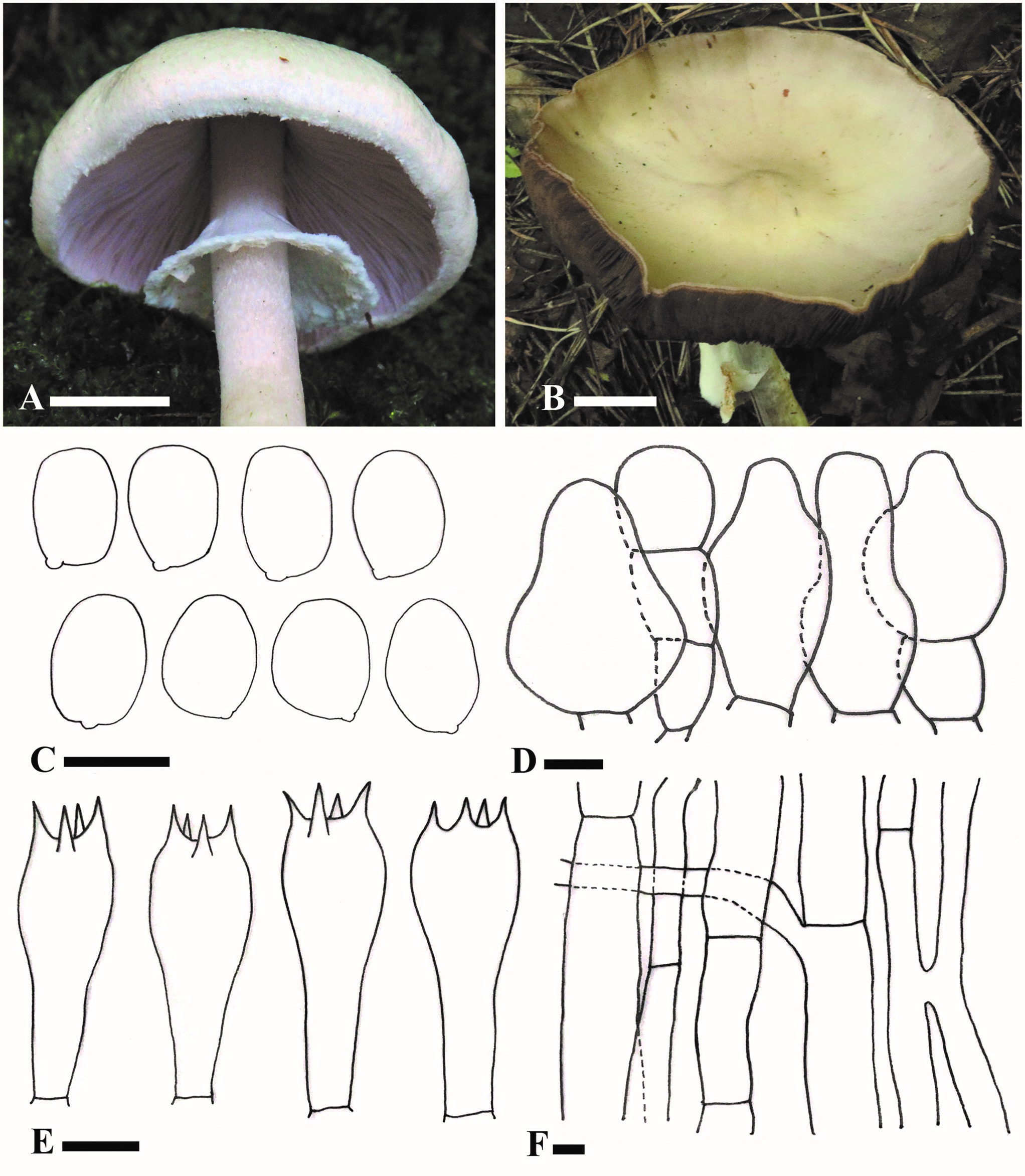
Agaricus pyricystis (ZRL20161191, holotype). A, B. Basidiomes. C. Basidiospores. D. Cheilocystidia. E. Basidia. F. Pileipellis hyphae. Bars: A, B = 2 cm; C–F = 5 μm.


